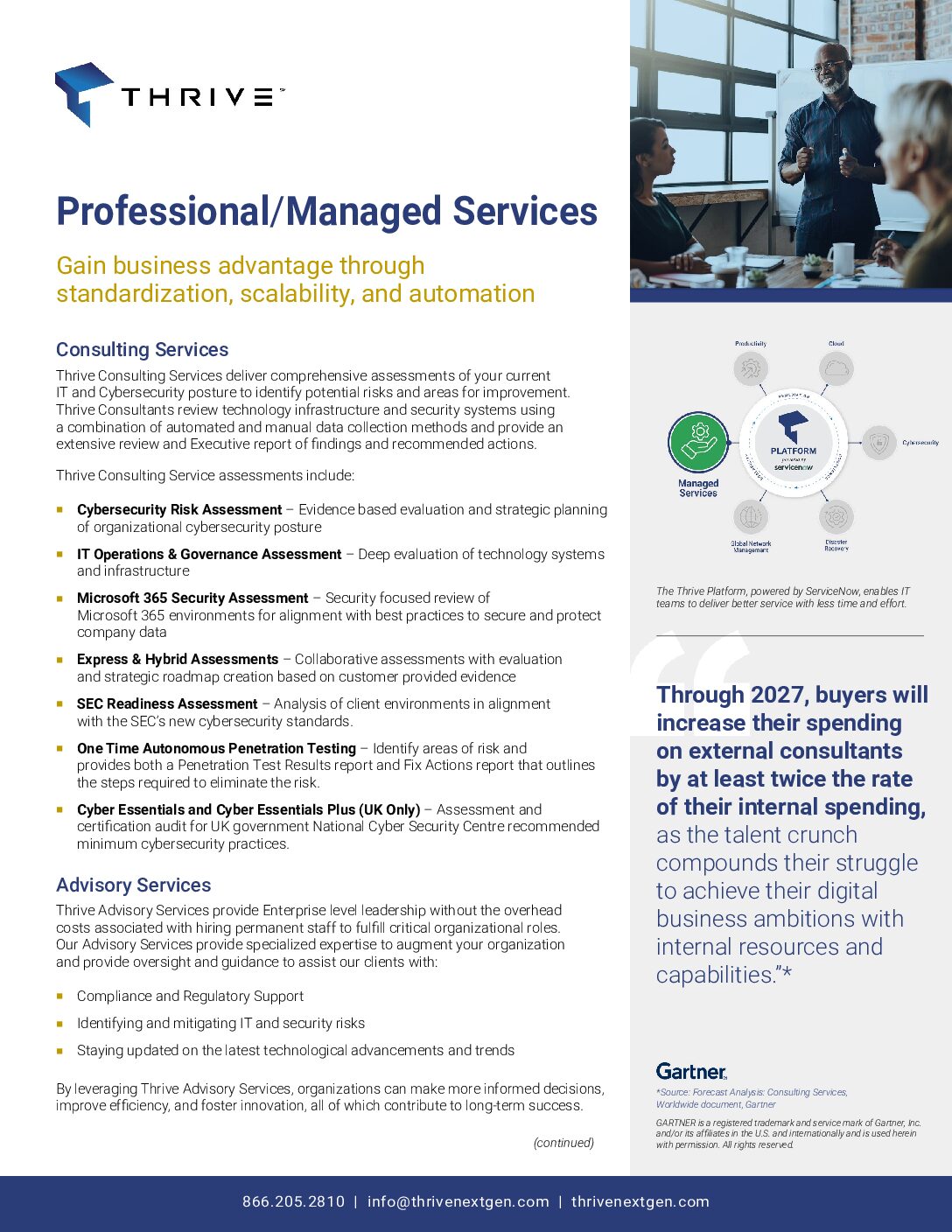Managed IT Services
Streamline and Strengthen Your IT Operations
As a trusted managed IT service provider, Thrive takes the burden of managing IT systems off your shoulders, ensuring all of your day-to-day IT needs are monitored and managed in one place. Our expert team of skilled professionals delivers proactive monitoring, maintenance, and mitigation, backed by top-notch support and our 24x7x365 Network Operations Center.
Our customizable managed services allow you to consolidate vendors while still leveraging cutting-edge technology across cybersecurity, Cloud and networking. If an issue arises, it just takes one call to your proactive, global support team of technical account managers and technology experts to remediate the problem.

Driving Better Business Outcomes
“Thrive continues to provide NextGen Managed Services that enable me and my team to focus on the unique elements and needs of a professional sports organization.”
– Jay Wessland, CTO, Boston Celtics
Watch Video Case Study
NextGen Managed Services
Through our flexible and powerful platform, Thrive offers NextGen managed IT services designed to optimize business performance, enable seamless scalability, and future-proof digital infrastructure operations.
Our comprehensive managed services allow businesses to focus on their goals, while feeling confident that their IT stack is secure and efficient.
Our customizable managed IT services leverage the Thrive5 Methodology, which ensures each customer receives a tailored strategy, access to the latest in on-premise and Cloud technologies, as well as advanced security, compliance, and governance.

Managed Cybersecurity
Thrive delivers an unmatched portfolio of managed cybersecurity services along with the experience, resources, and expertise needed to create a cybersecurity plan that covers network monitoring, vital data, Software as a Service (SaaS) applications, end users, and critical infrastructure.
Leveraging best-in-breed technologies, AI capabilities, and the power of automation, Thrive’s cutting-edge security services preemptively mitigates threats, allowing you to prioritize crucial business objectives while our expert security team swiftly responds and addresses complex issues through effective remediation.



Managed Cloud
Thrive offers a broad portfolio of Hybrid Cloud solutions and services backed by a proven track record of delivering managed Cloud services across private and public cloud platforms ensuring high performance, cost containment, enhanced cybersecurity, and flexibility. While the options are endless, you’re not in it alone. Our expert team of Cloud consultants will work with you to design the solution that best fits your business goals and budget.
Managed Microsoft 365
Thrive’s managed platform delivers proven Cloud-based collaboration and productivity solutions powered by Microsoft 365, SharePoint, Power Platform, and Microsoft Teams tailored to your businesses specific needs. As the world goes digital, your business will see improved communications, greater efficiency, and better decision-making.



Disaster Recovery as a Service
In the face of unplanned disruptions due to cyber attacks, hardware failure, user error, or power outages,Thrive provides managed Disaster Recovery as a Service (DRaaS) and IT business continuity solutions that minimize data loss and enable fast, automatic recovery of critical systems, ensuring full protection against events that can devastate normal business operations.
Global Network Management
Thrive offers top-tier managed networking services that empower businesses to run at maximum efficiency, gaining speed, security, and providing invaluable insight into network performance. Our seasoned team of experts ensures your business remains at the forefront of operational excellence, allowing you to stay fully focused on achieving your core business objectives.


Managed Services Resources
Maximize Efficiency and Reduce Costs with Thrive's Managed IT Services
Transform your business with the help of Thrive’s expert outsourced IT services. Our comprehensive managed services are tailored to help you optimize performance, reduce costs, and drive better business outcomes.
Ready to Speak with Our Experts?



